Dayum! I’m jealous.
Why can’t I find trees like this for my collection? 
This is an ilex vomitoria “schillings” that I’m styling for a client. 
I’m pretty sure it was collected by Dr. Reggie Purdue, bonsai artist extraordinaire, and a damned lucky individual in finding amazing yamadori , or collected trees. 
My guess, because someone will ask, that it was probably close to 50 years old, before collection, and I’m not sure how long since then but, by the branch development it has, my estimation is a good 5 years from that. 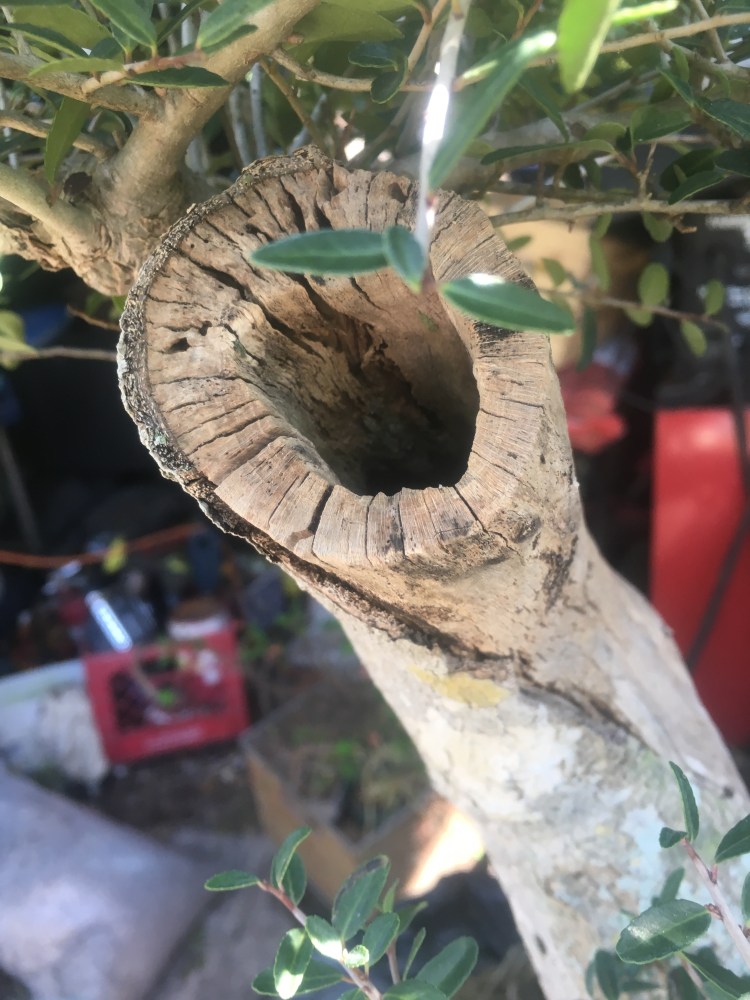
So it’s a goodly age for an ilex. As often happens, especially on ilex trees we collect and chop back, it does appear to have rotted out and is hollow from the top to the base. Deadwood on any ilex looks good but never lasts. 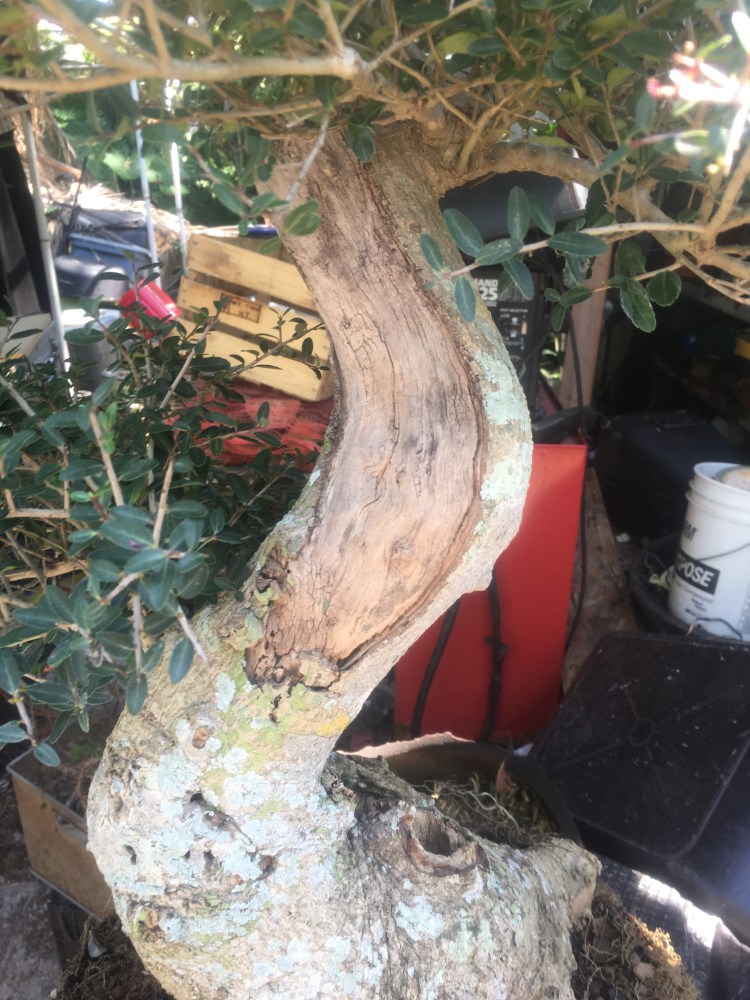
It’s one flaw is it only has branching from two areas, the top and on the first curve. 
But I can work with that. That’s why Mr. Edison invented annealed electrical wire.
First step is to repot it into a big pot. 
Yaupons need very well draining soil, when in bonsai pots, otherwise you get all types of fungal issues, in Florida. 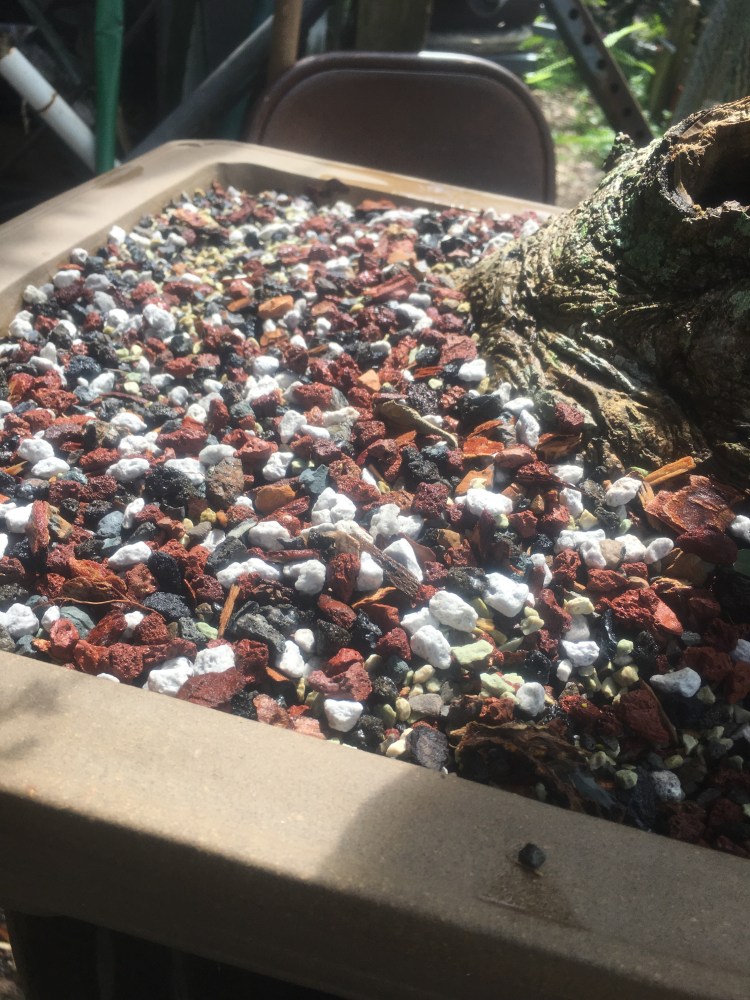 My mix is a modern, well thought out mix. It works, for me and many others. But, unlike many, I won’t push my mix on you, saying that you’re a bad bonsai practitioner if you use something different. If you’re interested in what I use go here, you won’t be disappointed.
My mix is a modern, well thought out mix. It works, for me and many others. But, unlike many, I won’t push my mix on you, saying that you’re a bad bonsai practitioner if you use something different. If you’re interested in what I use go here, you won’t be disappointed.
I consider myself an individualistic guru, I’ll show you what works for me, and general principles as to what may work, but it may not work for you. I don’t need followers, just companions on the journey.
Back to the tree….all the preliminary work has been done to make my job easier in the styling. 
We have fantastic primary and secondary branching, with appropriate movement, and lots and lots of tertiaries to choose from. 
Of course, being a schillings holly has much to do with all the backbudding, but it’s also been developed well. 
What I mean about it’s character as a schillings holly, is the cultivars ability to back bud like almost no other tree. And not just in where but in quantity. The tree will push multiple buds in one spot, allowing you to choose the best one suited for the styling. Who could ask for anything more? 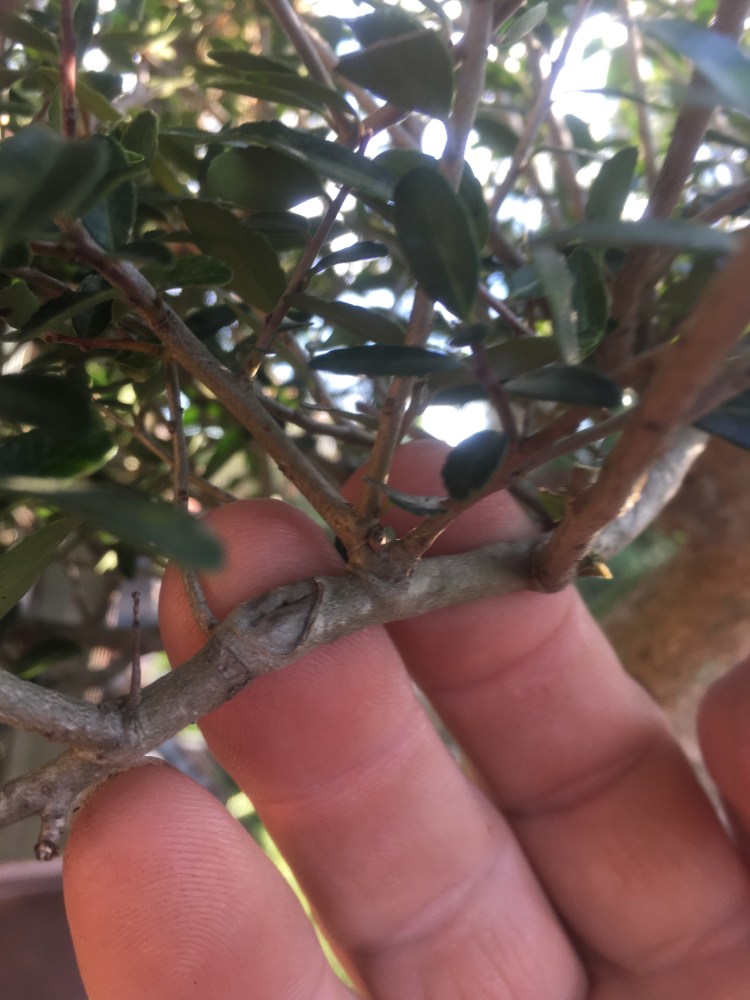 Like above, I can go up, left, back, or right just by snipping the other branches off.
Like above, I can go up, left, back, or right just by snipping the other branches off.
One down side to the tree is how brittle the lignified branches can be. But I’ve learned that new growth, even up to 1/3 of an inch thick, can still be bent, as long as the growing tip hasn’t been snipped too long ago.  The tree will concentrate on length, and fast growth in that goal, causing for a very flexible branch….like so…
The tree will concentrate on length, and fast growth in that goal, causing for a very flexible branch….like so…
But as soon as you cut that grow tip, the hardening (lignification) process begins and that branch becomes as unbending as a twenty year bonsai intermediate saying that, “…by god, that’s the way I lernt it and no ones gonna change my mind!”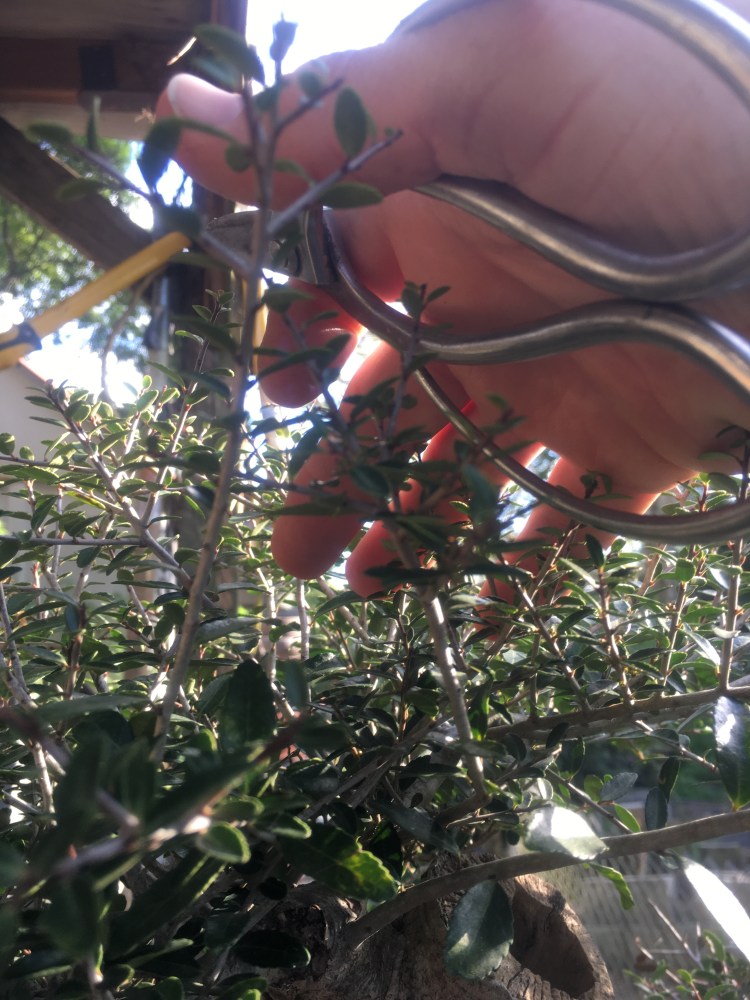
Anywho, I have some pruning and then wiring to accomplish before bedtime.
Let the fun begin!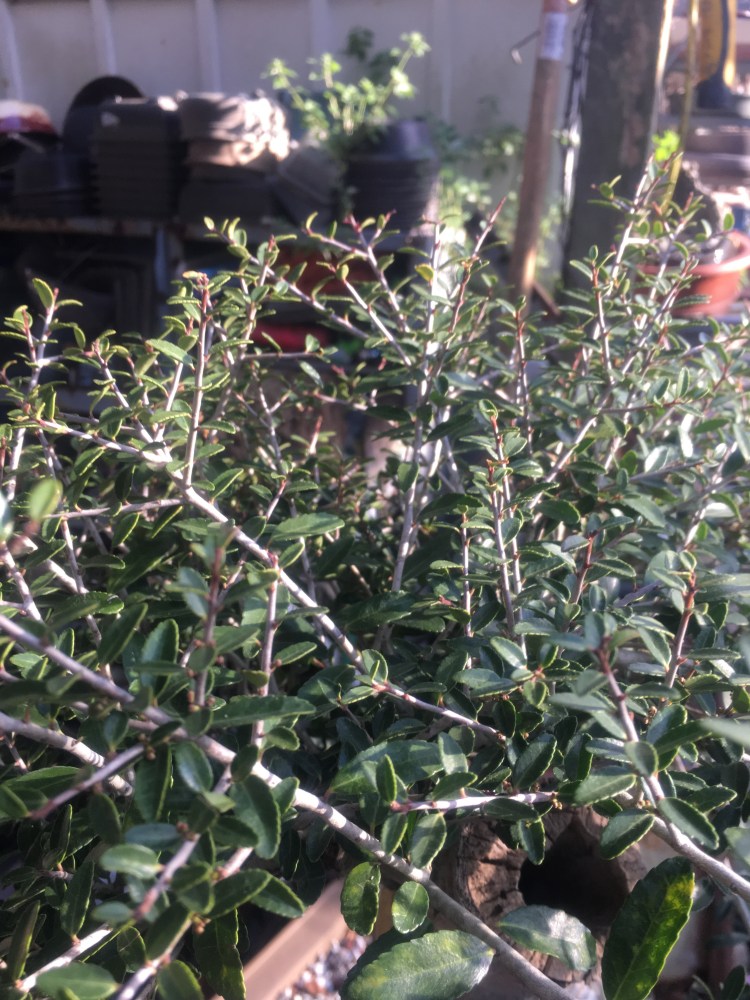
As I go through the tree, I’ll point out (sometimes literally, as below) , certain tricks you can utilize with a prolific grower like this ilex.
Should I leave a nub on the branch, it’s expected that I’ll get twice as many new buds from that nub. 
So, if you don’t want any more growth from that spot ( like below, which is in the inside of that curve) you need to cut it back, removing the branch collar, and, therefore, the undifferentiated meristematic tissue from whence the buds emerge. 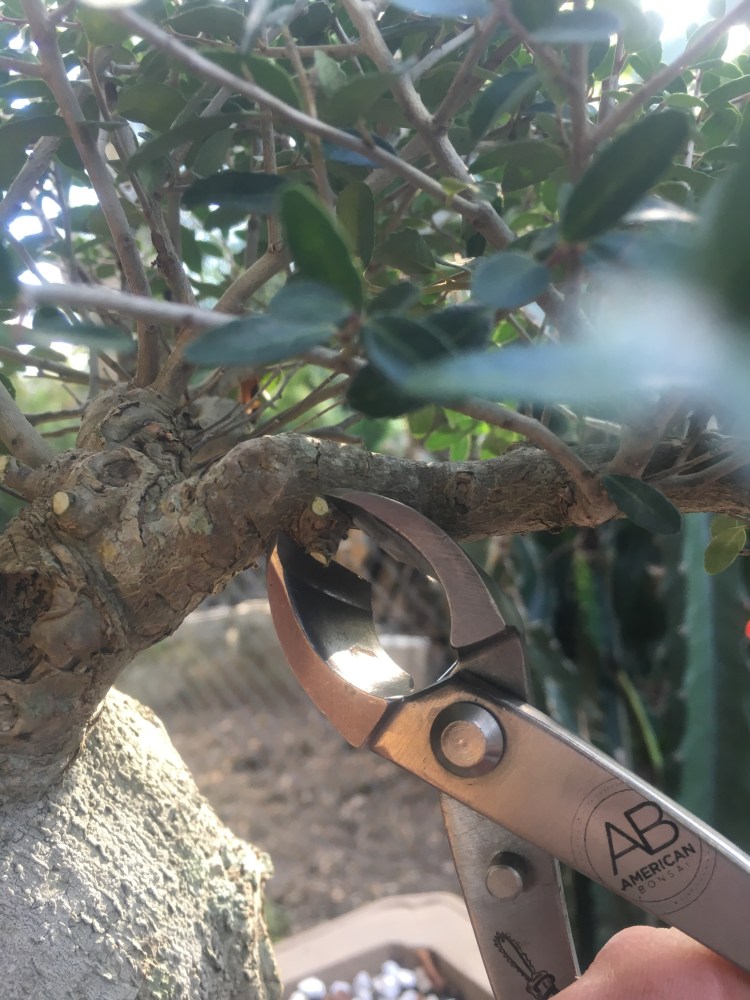
Slowly (I charge by the hour you know) I make progress. 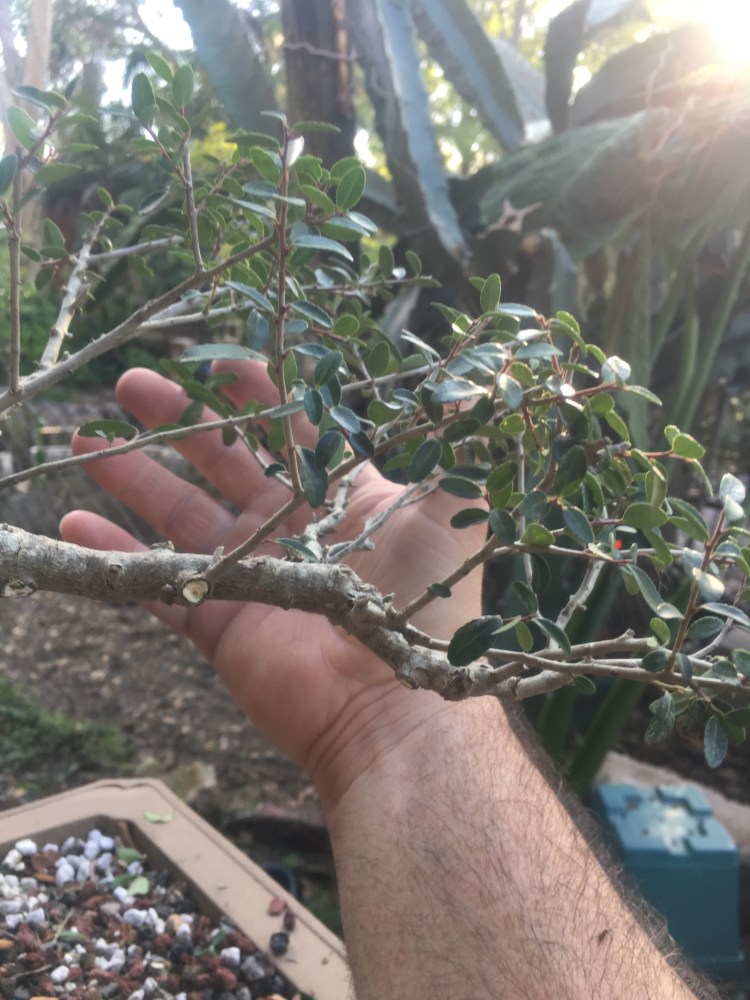
I leave branches that may or may not stay after the wiring process, just in case there are some….uh…..breakages. 
The Constant Loyal Reader is, of course, wondering why I didn’t defoliate yet. Easy, defoliating a smaller number of branches is easier than reforming the same technique a larger number of branches. Cut off what you don’t need first. 

People get intimidated when presented with a big tree but it’s really just back to basics. Figuring out what you need or don’t need. Prune to two branches at each division, everything growing down, or up, or in the branch crotch goes. 
Before removing a branch, maybe bend it (gently) into the area you’re going to wire it to, and see what doesn’t fit. 
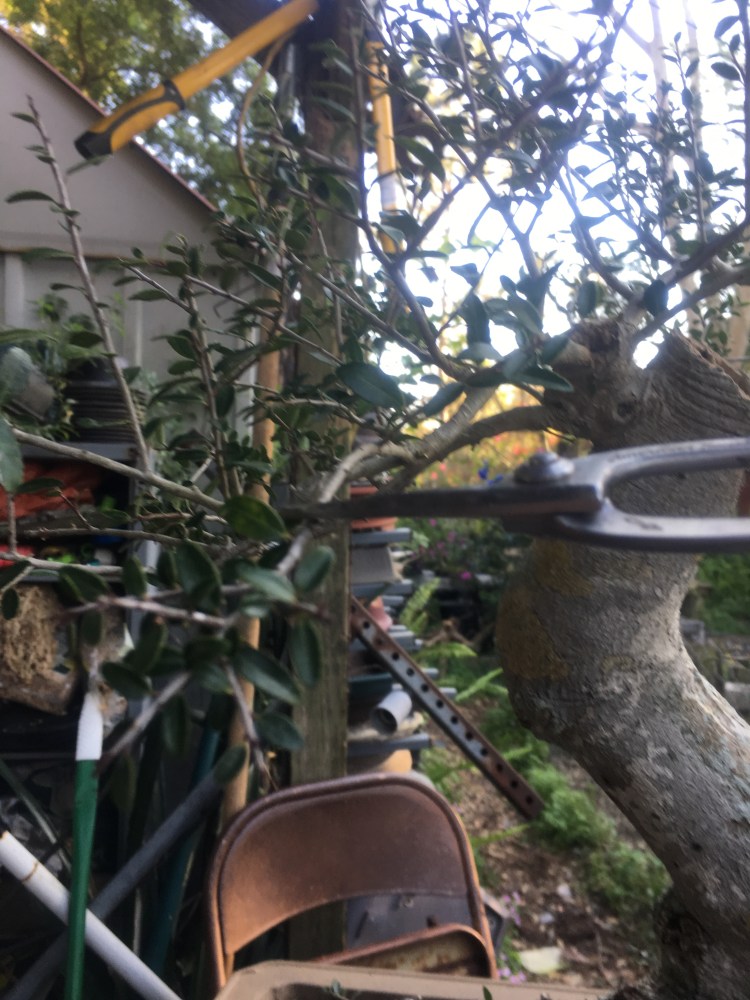
It really helps in figuring out those that need to stay.
Sometimes up will be down, or left will be right (and dogs and cats will be sleeping together).  All pruned.
All pruned.
Now for the wire….
Apply….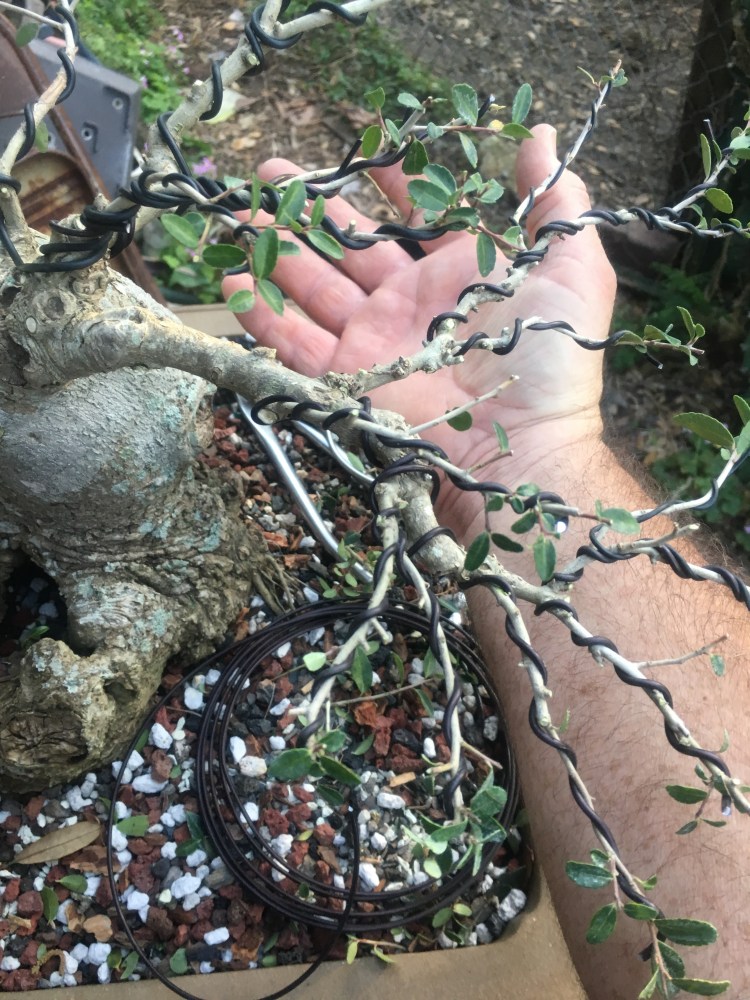
Bend…..
Apply….
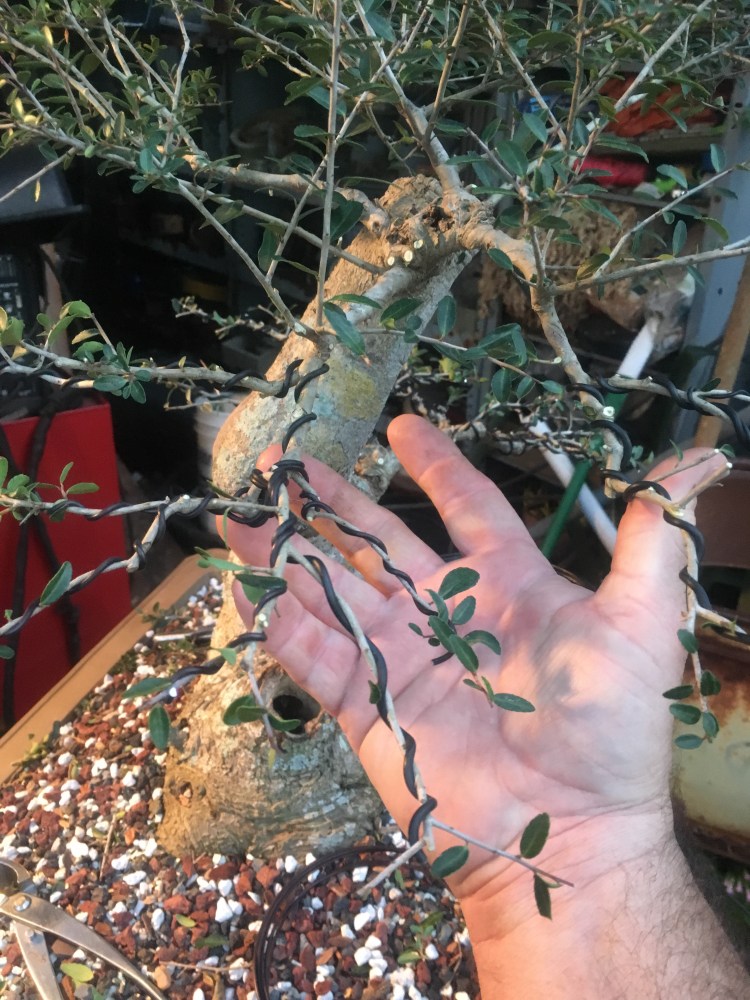
Bend…..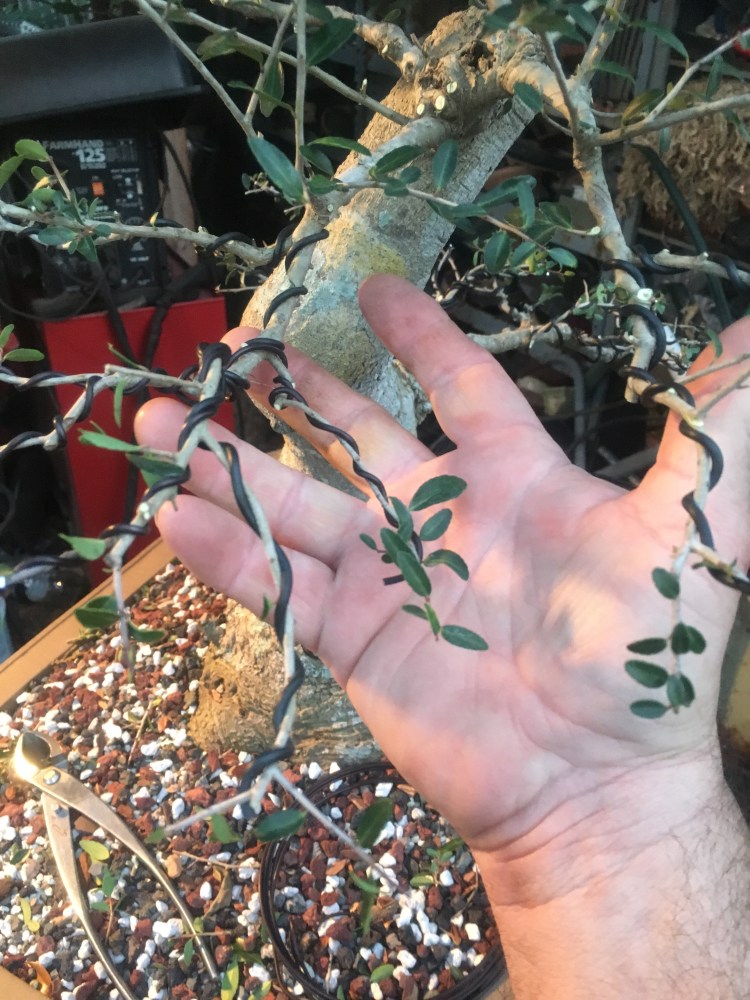
A little deadwood refining. Not really carving, more like breaking. 
And the tree is really coming together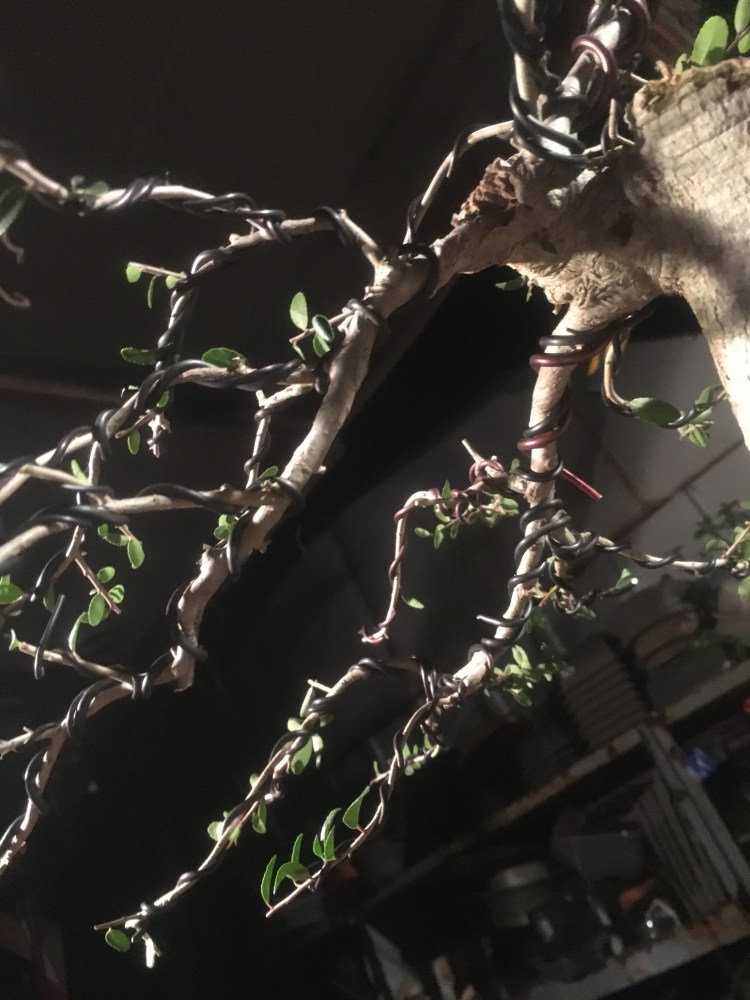

Unless you’ve worked on a tree like this, you can’t know how satisfying it is to see all the branches fall in place. 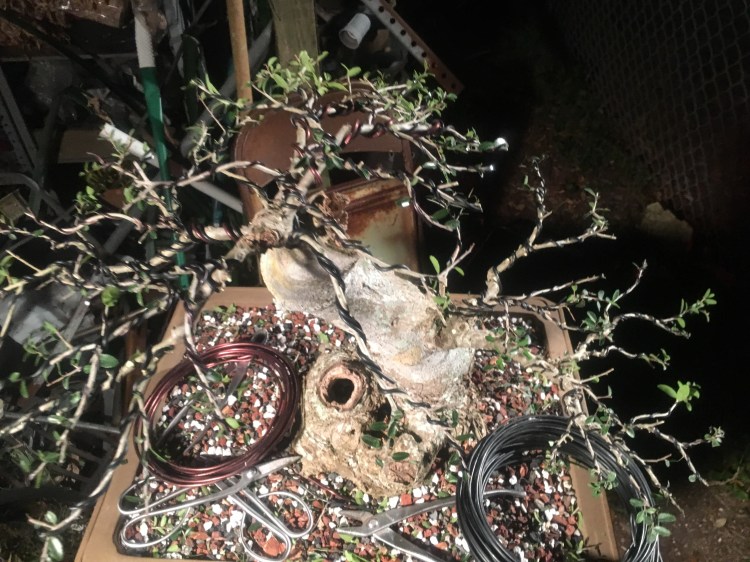
Now, a note to the owner:
I think the tree needs a third layer of development above the current top. It can stay this way, and many artists will keep it here, but, to my eye, I think that it being a taller tree would make the tree, well…..more tree-like, and less bonsai-ish.
About here….
It’s a controversial subject, if you know what I mean. One that is being debated all over the world, even in Japan.
Should our trees look like trees or like bonsai.

Some say it’s semantics. Some don’t care.
I say, there are times when we should make them more stylized, and times when they should look more natural.
The tree tells you what it wants to be.

And there it is.
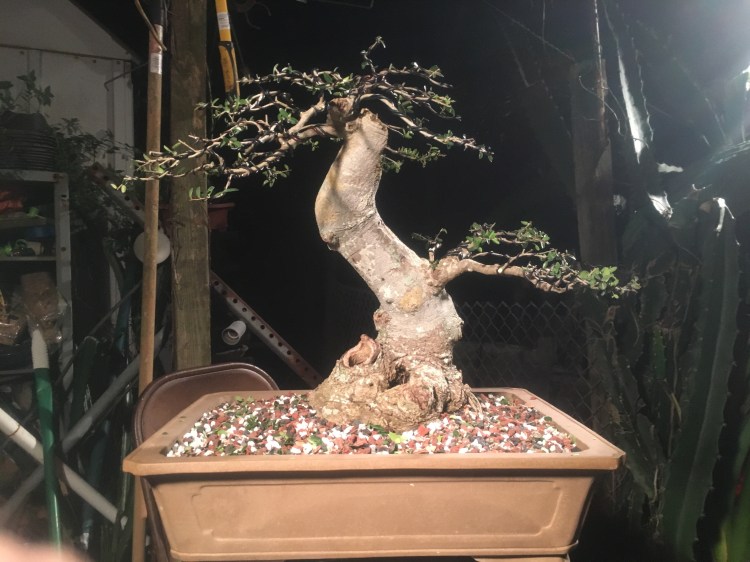
Thank you Cosette, I appreciate it.
Thank you Adam, I appreciate all your help and knowledge.
LikeLike
Adam, have you ever tried to graft on these? I have a three that I rescued from a neighbor’s yard and like this one, has a lacking of foliage in certain areas. Just wondering if it was possible to do a thread or approach graft.
LikeLike
I have not but a friend of mine did and was not successful. They tried an approach graft with a scion on its own roots and it just pushed it out.
LikeLike
I could not find anything, so, I’ll just have to work with what I have I reckon. Hey, are you heading West, anytime soon, like towards Buck’s in Mississippi?
LikeLike
I probably won’t go that way until at least next year. Two years in a row is a bit of overexposure.
LikeLike
Reblogged this on Wolf's Birding and Bonsai Blog.
LikeLike